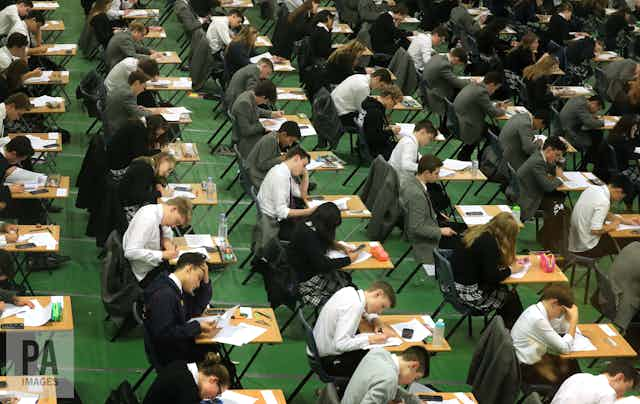The evidence against grammar schools mounts again. Our new research shows that grammars are no better or worse than non-selective state schools in terms of their pupils’ progress in attainment.
Our research analysed over half a million pupil records and found that although grammar schools don’t tend to make much of a difference to children’s school performance compared to other schools, they can be very damaging to social cohesion. This is because grouping more able and privileged children in grammars then impacts on the remaining majority of children attending nearby schools.
Recent smaller studies have also shown that grammar schools are no more effective than non-selective schools – once their intake differences are taken into account.
The apparent success of grammar schools is due to pupils coming from more advantaged social backgrounds, and already having higher academic attainment at age 11.
The great grammar revival
The Conservative party fought the 2017 election with a manifesto promising to increase the number of grammar schools and selective places at existing schools. There are currently 163 existing grammar schools in England, and although a new law would have to be passed to allow this number to grow, these schools are already steadily increasing their intakes. The numbers have jumped from 110,000 11 to 15-year-olds at grammar schools in 2010 to 118,000 in 2018.
These schools are relatively popular with parents in the few local authorities that retain them – although most areas also have opposition pressure groups. But given that our new findings indicate grammar schools offer no benefit to pupil progress, it’s clear that a policy of increasing selection within the schools system is dangerous for equality in society.

Our research is based on a review of international literature and analysis of all pupils at school in England between 2014 and 2016. The data comes from the National Pupil Database for England – and contains around 600,000 pupils with complete records for each year. Using prior attainment and newly derived indicators of disadvantage – such as how long any pupil has been eligible for free schools meals – it is possible to predict these pupils’ Key Stage 4 results with over 67% accuracy.
Adding knowledge of whether each pupil is in a grammar school, or in an area containing grammar schools, or not, makes no difference. As far as we can tell, a talented child selected for grammar school at age 11 will attain the same examination results at age 16 as if they had attended a comprehensive school. This finding alone is enough to mean that grammar schools should be dismantled rather than expanded.
Grammar schools and social segregation
The process of selecting pupils based on their academic ability at a young age leads to schools becoming segregated by social, ethnic, economic and other characteristics – such as poverty, special needs, ethnicity, first language, as well as the pupil’s age in their year.
Pupils with special educational needs (SEN) make up 4% of the school population in England and in areas with grammar schools. But only 0.3% of pupils with SEN go to grammar schools. Similarly, only 2% of the intake to grammar schools is eligible for free school meals compared to 15% in the areas surrounding them, and in England as a whole. This means that schools near grammar schools end up with a lot more than their fair share of pupils with SEN and pupils who receive free school meals.

In areas that have grammar schools, pupils living in the most disadvantaged parts are less likely to attend a grammar even where they have high prior attainment scores. Perhaps most tellingly, grammar school intakes are also skewed towards pupils who are older in their year, meaning that summer born pupils are more clustered in nearby schools.
Then there is also the fact that authorities with the worst social segregation between schools, all have high levels of selection in their area.
The damage of grammar schools
But this is not just a UK issue, as evidence shows that the disproportionate clustering of students within schools in terms of their ability, is a matter of concern worldwide.
All other things being equal, research shows that school systems across the world with higher levels of segregation of students by their parental income or immigrant status have been linked to lower overall attainment and weaker progress wherever this has been assessed.
It is also likely that children going to school in segregated areas will have less qualified teachers. This can lead to reduced opportunities to learn.
The school mix by socioeconomic status even seems to negatively influence how students are treated in school, as well as teachers’ expectations, and their relationships with pupils. This socioeconomic schooling divide also seems to have a negative impact on wider non-cognitive outcomes, such as emotional and behavioural problems, students’ sense of justice, civic knowledge and engagement.
All of which shows that dividing children by their ability levels from an early age, does not appear to lead to better results for either group. This is not to decry the schools that are currently grammars, or the work of their staff. It simply shows that the kind of social segregation experienced by children in certain areas in England exists for no clear gain.

